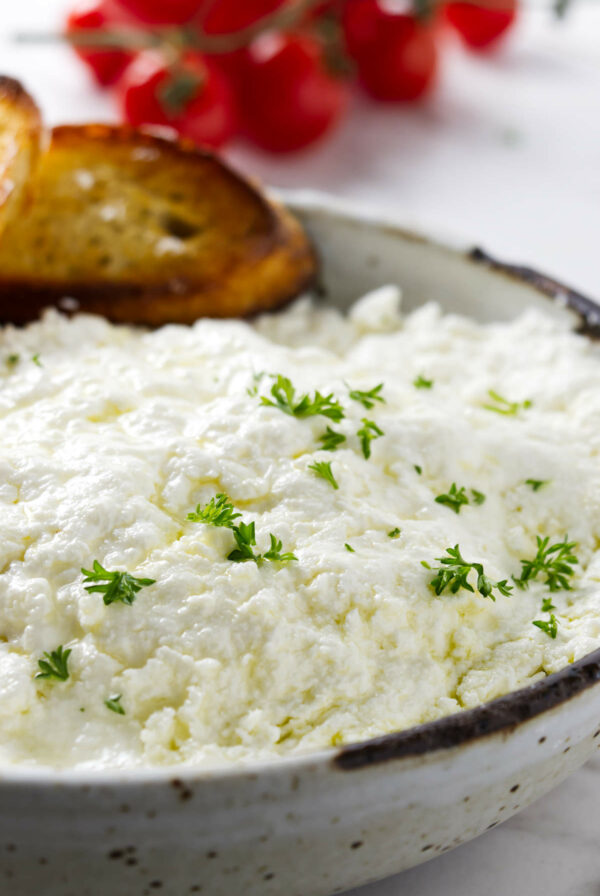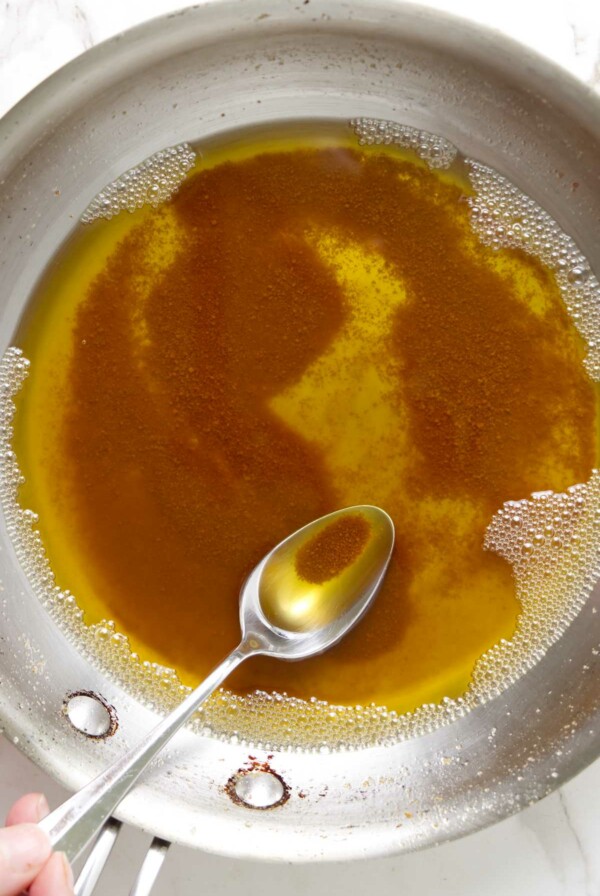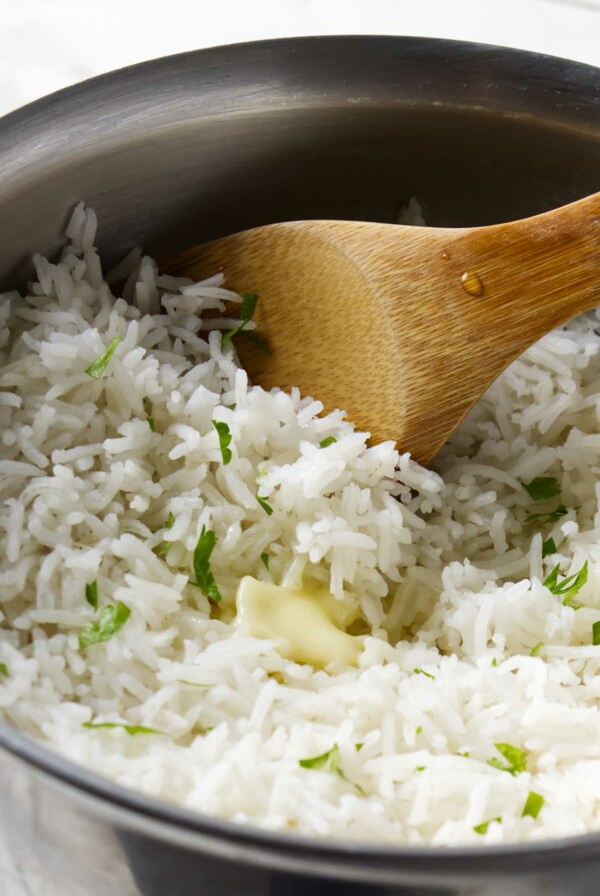This post may contain affiliate links. Please read our disclosure policy. As an Amazon Associate, I earn from qualifying purchases.
A great pizza sauce should stick to your dough, not slip off like a bad toupee. If it’s too thin, it won’t just slide off; it’ll seep into the crust, water down your toppings, and leave you with a pizza that feels more like a spaghetti mishap than a proper slice.
Luckily, thickening pizza sauce is easy, you just need to know which method works best for your style of sauce. If you’re working with a fresh, uncooked sauce or a slow-simmered, cooked sauce, there are simple ways to thicken it without compromising flavor.
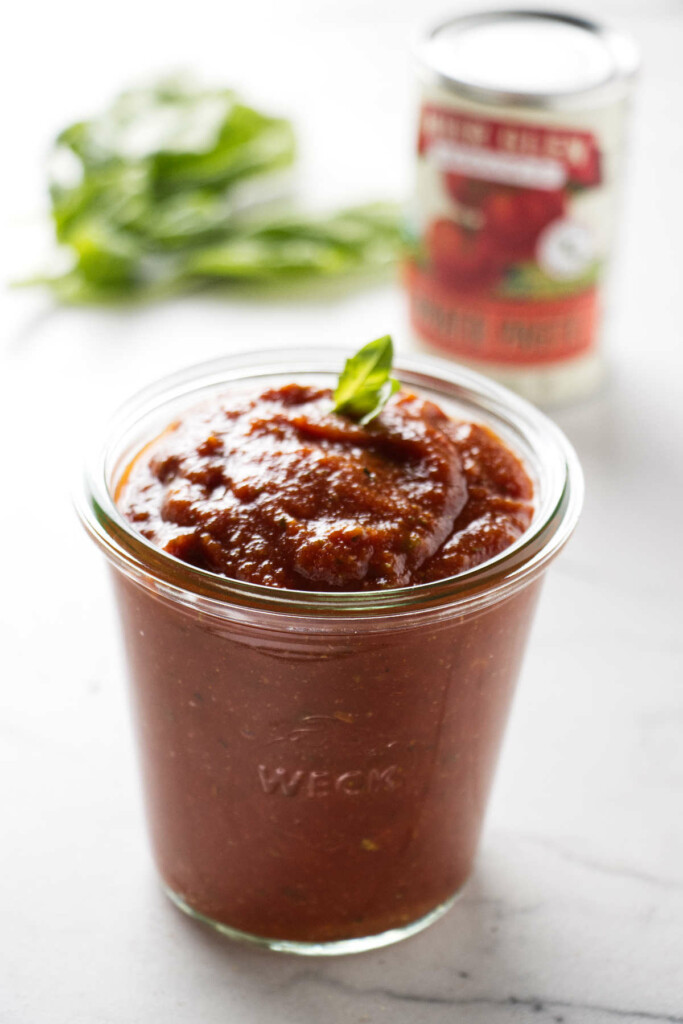
Thickening Uncooked Pizza Sauce
If you lean toward Neapolitan-style pizza, you probably swear by a fresh, uncooked sauce. This type of sauce is bright, tomato-forward, and usually made with whole canned tomatoes that are blended and lightly seasoned, no cooking required.
The problem? Canned tomatoes are packed in juice, which can make the sauce too watery. Here’s how to fix that without losing the fresh tomato flavor:
1. Strain Out Excess Liquid
Before blending your tomatoes, drain them well in a fine-mesh sieve. You don’t need to get them bone-dry, but getting rid of the excess juice helps keep the sauce from turning into tomato soup.
2. Use Tomato Paste
If your sauce is still too thin after straining, a spoonful or two of tomato paste can add thickness without cooking. It also intensifies the tomato flavor, making your sauce taste richer and more robust. If you prefer a sauce that starts with tomato paste, check out this pizza sauce from tomato paste.
3. Blend for a Thicker Texture
If your sauce has chunks of tomatoes, a quick blitz in a food processor or blender can help emulsify the sauce, making it thicker without adding anything extra. Just don’t over-blend, it should still have a little texture.
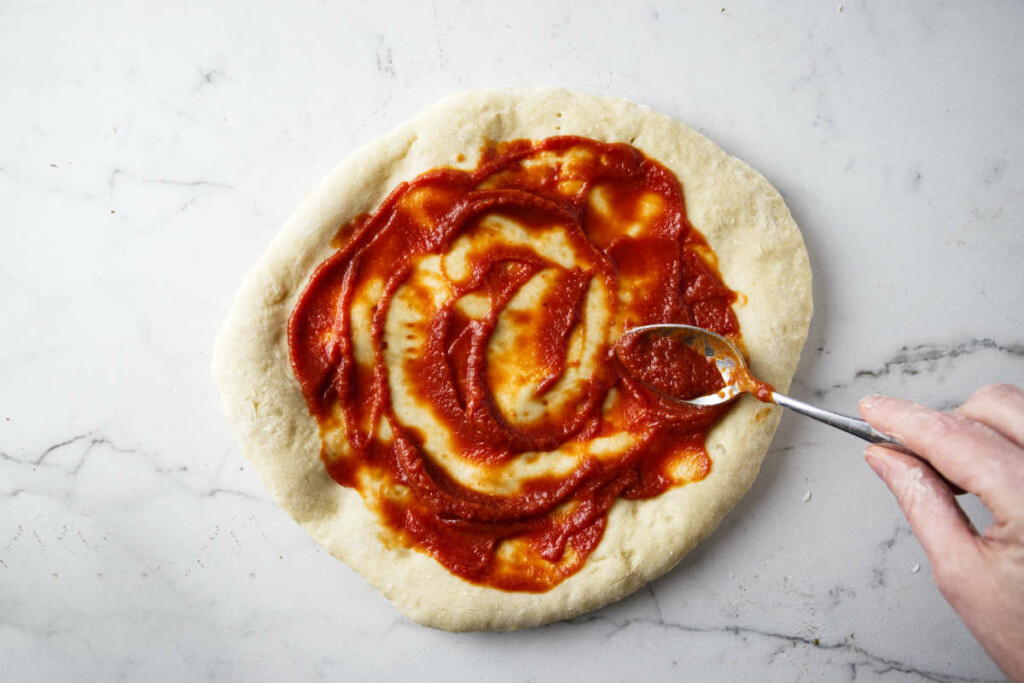
Thickening Cooked Pizza Sauce
If you’re making a Detroit-style, Chicago deep-dish, or any pizza that uses a rich, slow-simmered sauce, cooking it down is the way to go. But if your sauce is too thin, you need to give it some time and a little technique. If you’re starting with pizza sauce from fresh tomatoes, here’s how to thicken it:
1. Simmer It Down
The simplest (and best) way to thicken a cooked sauce is to reduce it. Here’s how:
- Pour your sauce into a wide, shallow pan. More surface area = faster evaporation.
- Bring it to a boil, then lower the heat and let it simmer uncovered.
- Stir occasionally to prevent scorching, and watch for the texture to thicken.
This can take anywhere from 20 minutes to an hour, depending on how much water is in your tomatoes. Be patient. This method gives you the deepest, richest flavor.
2. Add Tomato Paste
If you don’t have time to simmer for an hour, tomato paste works here too. Add a tablespoon at a time, stirring well, until you reach the consistency you want.
3. Stir in Grated Cheese
This one’s a bit of a wildcard, but hear me out, grated Parmesan or Pecorino Romano thickens the sauce slightly while adding a salty, umami boost. Just don’t go overboard unless you want a cheesy tomato spread.

Other Ways to Thicken Pizza Sauce
If you need a quick fix, here are a few other methods that can work for both fresh and cooked sauces:
1. Cornstarch Slurry
Cornstarch thickens sauces fast without changing the flavor. Here’s how to do it right:
- Mix 1 tablespoon cornstarch with 1 tablespoon cold water (always use cold water to prevent clumping).
- Stir it into the simmering sauce and cook for 1–2 minutes until thickened.
Pro Tip: Use cornstarch sparingly; too much can give the sauce a weird, glossy, almost gelatinous texture.
2. Flour Slurry
Flour works similarly to cornstarch but creates a slightly different texture:
- Whisk 1 tablespoon flour with 1 tablespoon cold water until smooth.
- Stir it into the simmering sauce and let it cook for 2–3 minutes.
This method is old-school but reliable, just be careful not to add too much or your sauce will start to taste like gravy.
3. Beurre Manié (Butter + Flour Paste)
This is my personal favorite for thickening sauces without lumps. A beurre manié is basically a roux that you don’t have to cook first.
- Mix equal parts soft butter and flour until smooth.
- Stir small amounts into the simmering sauce until it thickens.
Not only does this method thicken the sauce beautifully, but the butter also adds a rich, velvety texture.
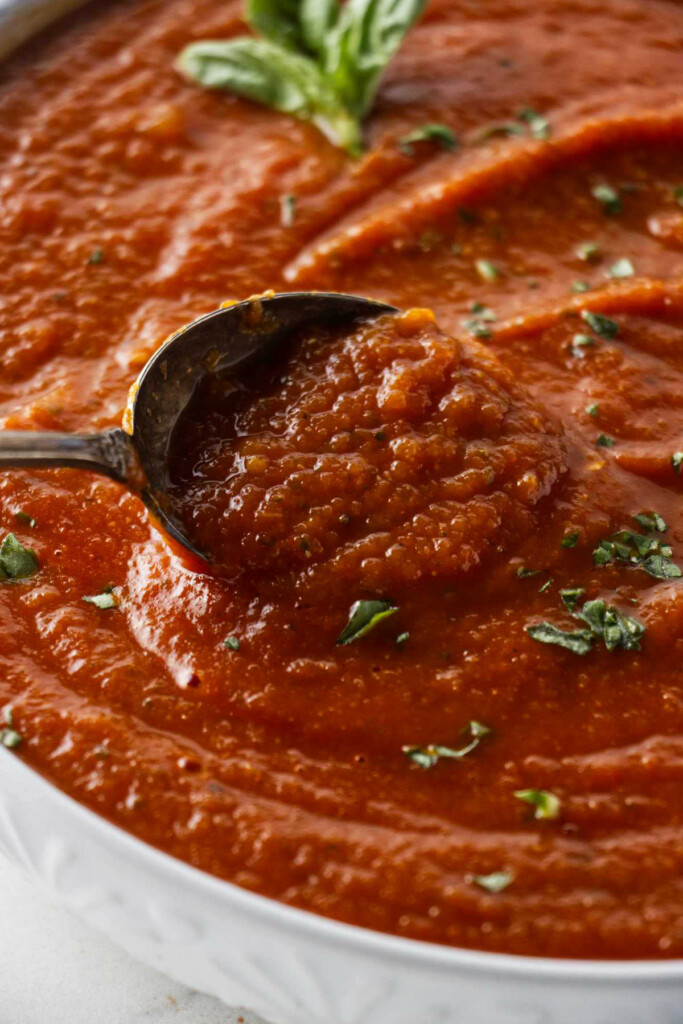
Thicken Pizza Sauce with an Egg Yolk
If you want a sauce that’s silky, thick, and slightly richer, an egg yolk can do the trick. This method works best for cooked sauces because heat activates the thickening power of the yolk.
How to do it:
- In a small bowl, whisk one egg yolk with a tablespoon of your warm sauce. (This tempers the yolk so it doesn’t scramble.)
- Slowly whisk the tempered yolk mixture back into the simmering sauce.
- Stir constantly over low heat for about 1–2 minutes, just until the sauce thickens slightly.
- Do not boil! High heat can cause the egg to curdle, and no one wants scrambled eggs in their pizza sauce.
Best for: Rich, slow-cooked sauces like those used in deep-dish or Detroit-style pizzas.
Why it works: The proteins in the egg yolk help bind and thicken the sauce without affecting the tomato flavor.
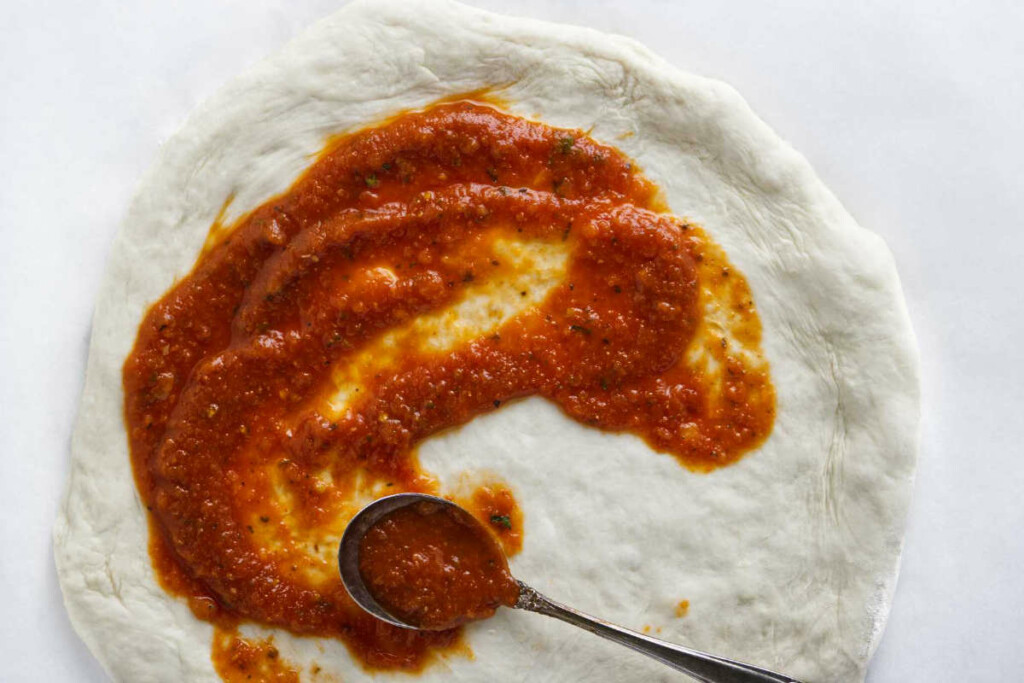
The Best Thickening Method for Your Pizza
| Pizza Style | Sauce Type | Best Thickening Method |
|---|---|---|
| Neapolitan | Uncooked | Strain tomatoes, add tomato paste |
| New York-Style | Cooked | Simmer, add tomato paste if needed |
| Detroit or Deep Dish | Slow-Cooked | Simmer for up to an hour, use beurre manié for extra thickness |
| Quick Fix | Any | Cornstarch or flour slurry |
Thick, Flavorful, and Ready for Pizza
A thin, watery pizza sauce can ruin an otherwise perfect homemade pizza, but fixing it is easy if you use the right method.
- Fresh sauce? Strain it.
- Simmered sauce? Reduce it.
- Need a quick fix? Try a slurry or beurre manié.
With a little patience (or a well-placed spoonful of tomato paste), you can get your pizza sauce exactly how you want it, thick enough to stay put, flavorful enough to be worth the effort.
If you’re making your sauce from scratch, why not go all in with a homemade pizza dough too? A good crust and a well-balanced sauce are the foundation of a great pizza. Not sure which flour to use? Here’s how pizza flour compares to bread flour for pizza dough.
Now go make some pizza.


